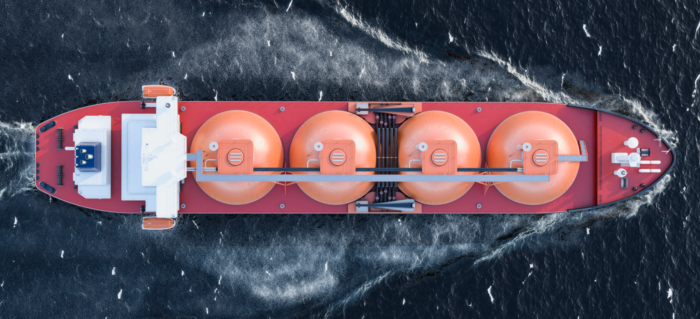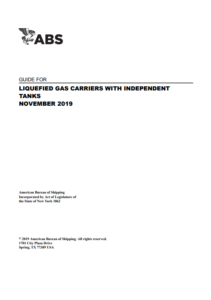ABS issued a guide concerning vessels designed to carry liquified gases and intended to have a structural fatigue life of not less than 20 years, providing guidance on the criteria that can be applied in the Classification of the hull structure of a liquified gas carrier with independent tanks.
Specifically, the Guide alerts that paint containing aluminum should not be used in cargo tanks, pump rooms and cofferdams, nor in any other area where cargo vapor may accumulate, unless it has been shown by appropriate tests that the paint to be used does not increase the fire hazard.
ABS highlights that
The November 2019 version modifes Note 5 of 4/Table 1 to specify that the maximum sagging still water bending moment of all the cargo loaded conditions is to be applied to LC 1, 3 and 6 for liquefied gas carriers subject to sagging still water bending moments.
Concerning fire hazards, ABS has also issued a guide on firefighting and safety systems of cargo holds of container vessels, the location of a series of high-profile fires onboard.
Moreover, the design temperature for cargo piping, cargo process pressure vessels and all associated equipment is the minimum temperature in the systems and components during the cargo operations. The design temperature for a complete or partial secondary barrier is to be assumed to be the cargo temperature at atmospheric pressure.
General requirements
The Guide highlights that interested parties should firstly assess the structures against the following three failure models:
- Material Yielding: The calculated stress intensities are not to be greater than the yielding state limit given in 6/5 for the applicable load cases specified in 4/3.
- Buckling and Ultimate Strength: For each individual member, plate or stiffened panel, the buckling and ultimate strength is to be in compliance with the requirements specified in 6/7 for the applicable load cases specified in 4/3.
- Fatigue: The fatigue strength of structural details and welded joints in highly stressed regions, is to be analyzed in accordance with 6/9 for the applicable load cases specified in 4/5
Dynamic Load Criteria
The following dynamic load components are to be considered in the structural evaluation of hull, cargo tanks, tank supports and chocks:
- Vertical and horizontal wave-induced bending moments
- Vertical and horizontal wave-induced shear forces
- External pressure
- Internal pressure
- Bow wave impact
- Bow flare slamming for forebody structures
- Bottom slamming for forebody structures
- Green water
- Sloshing loads
- Thermal loads
- Loads corresponding to ship deflection
To learn more on the criteria ABS has set, click herebelow





























































